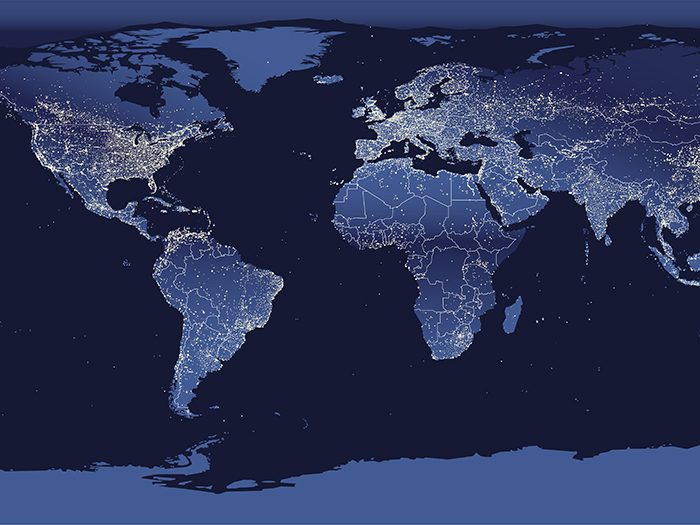Inflation, Energy Costs and a Looming Recession Clamber Up Allianz’s List of Risk Managers’ Concerns

Macroeconomic concerns — inflation, the price and availability of energy, and possible recession — were among the new concerns among risk managers world wide, according to the 12th annual risk barometer compiled by Allianz Global Corporate & Specialty (AGCS).
The survey of key business risks around the world, as determined by more than 2,700 respondents, was released in the middle of January.
Cyber incidents and business interruption rank as the biggest company concerns for the second year in succession, both being cited by 34% of all responses.
However, it was macroeconomic developments such as inflation, financial market volatility and a looming recession (up from #10 to #3 year-on-year), as well as the impact of the energy volatility (a new entry at #4) that were the top risers in this year’s list of global business risks.
While the trends themselves are enlightening, the relationships among them are telling as well: “Business interruption, cyber, fire and NAT Cat — all of those things are interconnected,” said Thomas Varney, regional manager for AGCS. “One of them can cause others.”
He also noted that some respondents may be using different terms for the same risks.
“In Canada, there was particular attention on climate. In the U.S. there was focus on NAT Cat. Those can be seen as essentially the same things.” He explained that the U.S. tends to have more hurricanes, tornadoes and flooding, but the frequency and severity of those is exacerbated by climate change.
How Risk Managers Are Looking at Things
At the highest level, the job of the risk manager is to determine what exposures are insurable, or otherwise transferable, and which are inherent conditions for which reserves, or allowances, need to be made. Those decisions in turn are not only affected by emerging risks, but also by innovation in risk transfer.
“Look at where cyber coverage is today versus where it was 10 or 20 years ago,” said Varney. “There are new types of coverage being considered and developed all the time. It is important for that to be part of the understanding. It should be a part of the discussions among risk managers, their brokers and underwriters: These are our risks. Are there vehicles for transferring those risks? How are those priced and if there is a claim, how does that work?”
As an example he cited energy pricing as a growing concern. While traditional insurance is not common for energy price volatility; instead there is hedging for managing and mitigating those risks. There can also be multiple sources of supply, as well as adding resilience and redundancy to the supply chain. Those added costs and implicit inefficiencies are risk management.
“Those types of things are going to be looked at much more closely from now on,” said Varney.
Collaboration Is Vital
Returning to the theme of collaboration, Varney stressed, “there needs to be more of the approach of insureds and their brokers driving insurance innovation. We have a lot of focus on emerging risks. What is emerging from things like risk barometer is an equal focus on emerging needs of insureds.”
To be sure, the balance of whether insurance is bought or sold is always shifting.
“I would rather focus on concerns from brokers and clients,” said Varney, “and how we can work through the actuarial process to come to a fair and equitable way to address those concerns. That is how we are relevant.”
He noted non-damage business interruption as one way emerging concerns can be addressed.
Risks on the Move
Varney added there were a few things that raised his eyebrows in this year’s barometer, notably among the risks that slipped lower.
“I was surprised that NAT Cat declined, especially as we just had Hurricane Ian. I don’t think that drop necessarily means that NAT Cat is less of a concern, rather than the fact that, to some extent, the risk barometer reflects the pressing issues at the time. In this moment those are macroeconomic issues, especially energy.”
Similarly, fire and explosion slipped lower in the barometer. Varney suggested several possible reasons for that. Fire science, both prevention and suppression, have made tremendous advances.
“We can credit that decline [in the barometer] to risk management and insurance. We understand that there are things in place both in types of physical protection as well as insurance protection.”
Part of it could also be, as he initially noted, one risk or another can be identified in different ways. “Some risks from fire and insurance could be related to [or shifted to] business interruption.”
Breaking Down the Top 10
In its analysis of the data, AGCS suggested that “such pressing concerns call for immediate action, explaining why both natural catastrophes (which moved from #3 to #6) and climate change (#6 to #7) dropped in the annual rankings. Political risks and violence is another new entry in the top 10 global risks at #10, while shortage of skilled workforce rose to #8. Changes in legislation and regulation remained a key risk at #5, while fire/explosion dropped two positions to #9.”
The top four risks in the Allianz Risk Barometer are broadly consistent across all company sizes globally as well as across core European economies and the U.S. (energy crisis excepted). Risk concerns for businesses in Asia Pacific and African countries show some deviation, reflecting the different impact of the ongoing war in Ukraine and its economic and political repercussions.
Cyber incidents, such as IT outages, ransomware attacks or data breaches, ranks as the most important risk globally for the second year in a row. This is the first time this has occurred.
It also ranks as the top peril in 19 different countries, among them Canada, France, Japan, India and the UK. It is the risk that small companies (<$250 million annual revenue) are most worried about.
For businesses in many countries, 2023 is likely to be another year of heightened risks for business interruption (BI), because many business models are vulnerable to sudden shocks and change, which in turn impact profits and revenues.
Ranking #2 globally, BI is the number one risk in countries such as Brazil, Germany, Mexico, Netherlands, Singapore, South Korea, Sweden and the U.S.
The scope of disruptive sources is wide.
Cyber is the cause of BI companies fear most (45% of responses); the second most important cause is energy (35%), followed by natural catastrophes (31%). The cost of energy has forced some energy-intensive industries to be more efficient, move production to alternative locations, or even consider temporary shutdowns.
The resulting shortages threaten to cause supply disruption across several critical industries in Europe, including food, agriculture, chemicals, pharmaceuticals, construction and manufacturing. &










